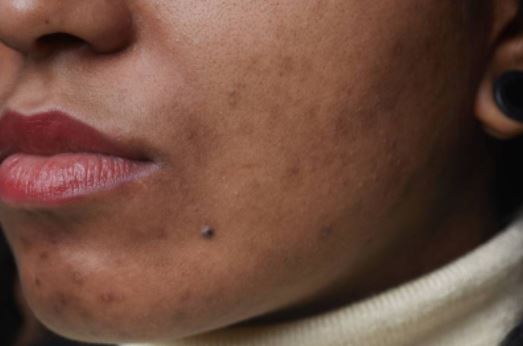Lifestyle
How to deal with jawline acne

Do you have stubborn acne that seems focused on your chin and jawline? You are not alone.
Dermatologists say it could be due to the fact that many oil glands are located around your chin, making it a hotspot for breakouts.
Though hormonal acne is most commonly found on the chin and jawline, it can also appear on the side of your face or down your neck.
Some people also experience hormonal acne on the back, chest and shoulders. Acne on your jawline can be caused by poor skincare habits, irritation from new products, or medications.
Whatever the source, acne on your jawline can be quite difficult to get rid of. Even worse, it often leaves you with unsightly scars – especially if you pick at the pimples.
Let us explore some of the best ways to deal with stubborn jawline acne.
- Don’t pop the pimples
The first rule of dealing with acne of any type is: do not pop or pick at the pimples. Often, that causes them to spread even further and also leaves you with scarring. Not popping pimples is especially important when dealing with hormonal acne.
You will notice that the hormonal cystic spots you get on your jawline feel different from whiteheads. Hormonal acne usually has a hard bump below the surface and a painful red bump. Whiteheads, on the other hand, have pus that can be drawn out by pressing or a warm compress.
You can, therefore, pop a whitehead. But a cystic acne bump cannot be popped. If you try to pop them, they become infected and start spreading all over your lower facial area. Even if you manage to pop the pus from a cystic pimple, the sac is left underneath the skin and can grow back.
- Go for retinoids
Derived from vitamin A, retinoids are a skincare powerhouse that can also help you deal with jawline acne. Retinoids accelerate cell turnover, enabling your skin to exfoliate dead skin cells more rapidly. It comes in handy for unclogging your pores to get rid of acne.
It can also help improve the appearance of acne scars. If you are a beginner at using retinol, start by applying it only once every other day. If you are not a beginner, you can use it once a day after cleaning your face.
- Try salicylic acid
Salicylic Acid is a powerful acne-buster. This beta hydroxy acid occurs naturally such as in willow bark and is known for its anti-inflammatory benefits. It also exfoliates your skin and unclogs your pores to reveal a flawless complexion. Salicylic Acid can help prevent and get rid of whiteheads, blackheads, pustules, and papules.
It works by breaking the bonds between dead skin cells and breaking down oils such as sebum. In addition, it decreases the skin’s sebum production – leading to fewer breakouts.
Go for a 0.5 to 2 per cent concentration product and make sure to read and follow the instructions. You can also go for a Salicylic Acid chemical peel from a qualified dermatologist.
- Try benzoyl peroxide
Benzoyl Peroxide is one of the most commonly recommended topical treatments for acne. It has antiseptic qualities that kill bacteria on your skin, reducing breakouts. You can use it in combination with salicylic acid or by itself.
If you have sensitive skin or eczema, it is best to avoid Benzoyl Peroxide as it is known to cause irritation. Beginners can start with a 2.5 per cent concentration as higher doses are more likely to cause dryness and irritation.
Beware that Benzoyl Peroxide can stain clothes. Therefore, it is best to avoid it before going to bed so as not to stain your beddings.
- Think about what you eat
While there is no magic food to eat to clear your skin, eating more consciously can help get rid of acne breakouts. Try to minimise consumption of junk food, sugar, and unhealthy fats.
Aside from that, you need to load your plate with healthy foods such as leafy greens, foods rich in zinc (such as shellfish, chicken, nuts, sunflower and pumpkin seeds); foods rich in beta carotene (such as carrots, butternut, and mango) and probiotics (such as yoghurt, kefir, and kimchi).






